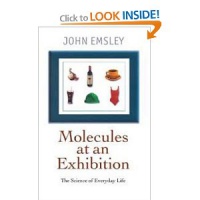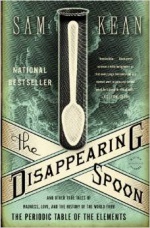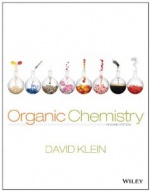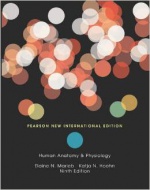Author: John Emsley
 |
Call no. QP514.2 E55M 1999
Book Description What ingredient in Coke can remove rust from chrome? What is the bitterest substance on earth? What is the worst smelling one? In this entertaining tour of chemistry, John Emsley answers these and many other questions as he illuminates the materials that make up our world. Dozens of lively articles explore such well-known molecules as water, oxygen, and glass; versatile plastics like polypropylene, polystyrene, and polyurethane; even “elements from hell” such as Sarin (a lethal nerve gas). With no formulas, equations, or molecular diagrams to baffle the non-expert, each piece blends history, science, and anecdote, with many intriguing facts added to the mix. “The world of chemistry has never been made as entertaining,” writes Nobel Prize-winning chemist Roald Hoffmann. Indeed, this book will fascinate everyone curious about the chemicals in the foods we eat, the clothes we wear, and the air we breathe. (amazon.com)
|
Author: Sam Kean
 |
Call no. QD466 K24D 2011
Book Description From New York Times bestselling author Sam Kean comes incredible stories of science, history, finance, mythology, the arts, medicine, and more, as told by the Periodic Table.
Why did Gandhi hate iodine (I, 53)? How did radium (Ra, 88) nearly ruin Marie Curie’s reputation? And why is gallium (Ga, 31) the go-to element for laboratory pranksters? The Periodic Table is a crowning scientific achievement, but it’s also a treasure trove of adventure, betrayal, and obsession. These fascinating tales follow every element on the table as they play out their parts in human history, and in the lives of the (frequently) mad scientists who discovered them. THE DISAPPEARING SPOON masterfully fuses science with the classic lore of invention, investigation, and discovery–from the Big Bang through the end of time. Though solid at room temperature, gallium is a moldable metal that melts at 84 degrees Fahrenheit. A classic science prank is to mold gallium spoons, serve them with tea, and watch guests recoil as their utensils disappear.(amazon.com) |
Author: David R. Klein
 |
Call no. QD253.2 K64O 2013
Book Description Organic chemistry is not merely a compilation of principles, but rather, it is a disciplined method of thought and analysis. Success in organic chemistry requires mastery in two core aspects: fundamental concepts and the skills needed to apply those concepts and solve problems. Readers must learn to become proficient at approaching new situations methodically, based on a repertoire of skills. These skills are vital for successful problem solving in organic chemistry. Existing textbooks provide extensive coverage of, the principles, but there is far less emphasis on the skills needed to actually solve problems. (amazon.com)
|
Author: Katja N. Hoehn, Elaine N. Marieb
 |
Call no. QP34 .5 M334H 2013
Book Description With the Ninth Edition of the best-selling Human Anatomy & Physiology, trusted authors Elaine N. Marieb and Katja Hoehn have produced the most accessible, comprehensive, up-to-date and visually stunning anatomy & physiology textbook on the market. Marieb draws on her career as an A&P professor and her experience completing her nursing education; Hoehn relies on her medical education and award-winning classroom instruction–together, they explain anatomy & physiology concepts and processes in a meaningful and memorable way. (amazon.com)
|
